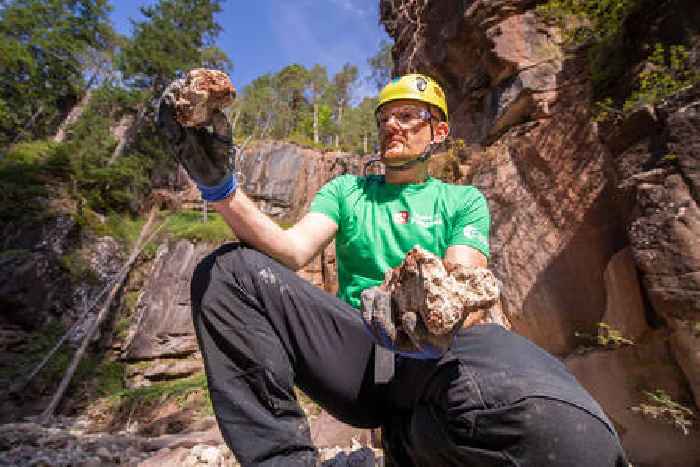Image:
ESA astronaut Alexander Gerst and NASA astronaut Stephanie Wilson are getting world-class geology training this week during the fifth edition of ESA’s Pangaea course.
A balanced mix of theory and field trips, the course will take the pair all over Europe to hone their geology skills. The training began last week in the Italian Dolomites with lessons on fundamental geology knowledge and skills, martian geology and asteroids at Bletterbach Canyon.
The rock samples from the canyon Alexander is holding in this image are a combination of gypsum (white hue) in siltstone-sandstone (reddish hue), and are analogous to rocks found on Mars.
This week, Alexander and Stephanie will follow the footsteps of Apollo astronauts to study the Ries crater in Germany, one of the best-preserved impact craters on Earth, where American crews trained before their flights to the Moon.
The course concludes the year with a trip to the volcanic landscapes of Lanzarote, Spain in November, to learn about the geological interactions between volcanic activity and water – two key factors in the search for life.
The final part of the course has the astronauts travel to Lofoten, Norway, to focus on rocks similar to the lunar highlands. These will be important locations to explore during the future Artemis missions, as they may hold key information for unravelling the history of the Moon and our Solar System.
The different field locations visited during Pangaea are used to train Alexander and Stephanie on how to read a landscape, collect scientifically relevant samples and effectively communicate their geological observations with teams back on Earth.
Alexander is a geophysicist, volcanologist and more recently International Space Station commander in 2018, and has seen 5700 sunrises and sunsets in space. Pangaea is challenging this seasoned space explorer to become a field scientist in preparation for future deep space missions, where the astronauts will be the eyes and ears of the scientific community on Earth.
Follow Alexander on Twitter for his takes on getting back in the classroom for Pangaea.
Alex on the rocks
ESA
0 shares
2 views
You might like
Related news coverage
Intense Reef Rescue on FOX’s Rescue- Hi-Surf
Brace yourself for edge-of-your-seat drama in Rescue: Hi-Surf! When a surfer is thrown into peril near a treacherous reef, the..
FanReviews



